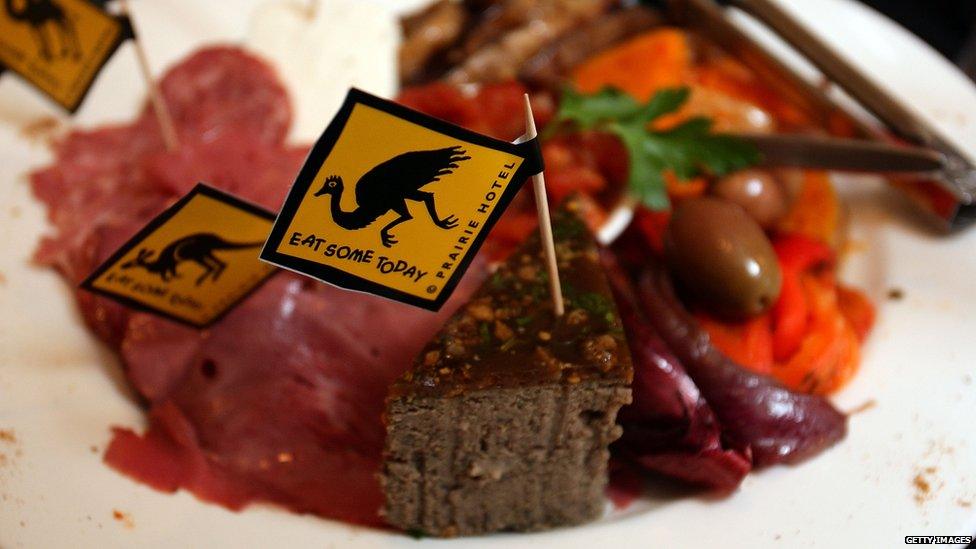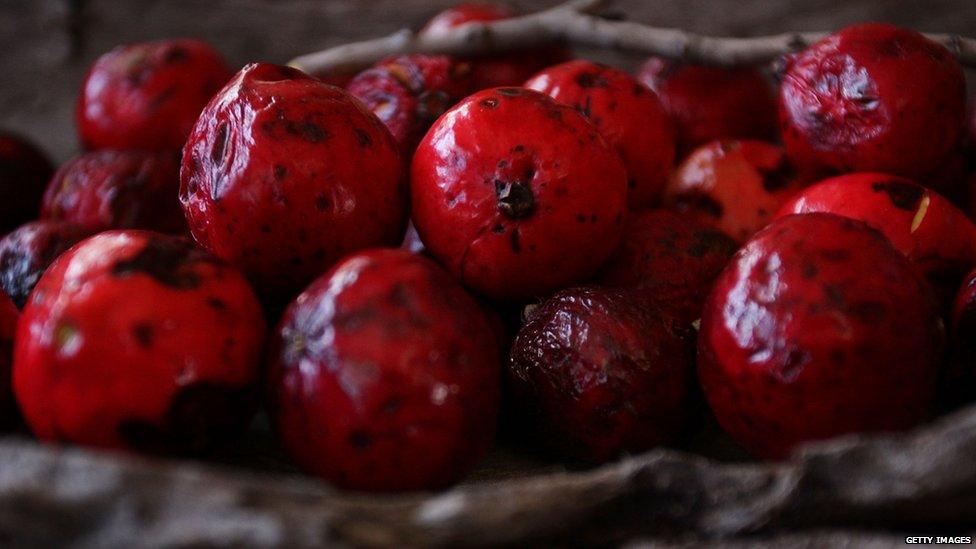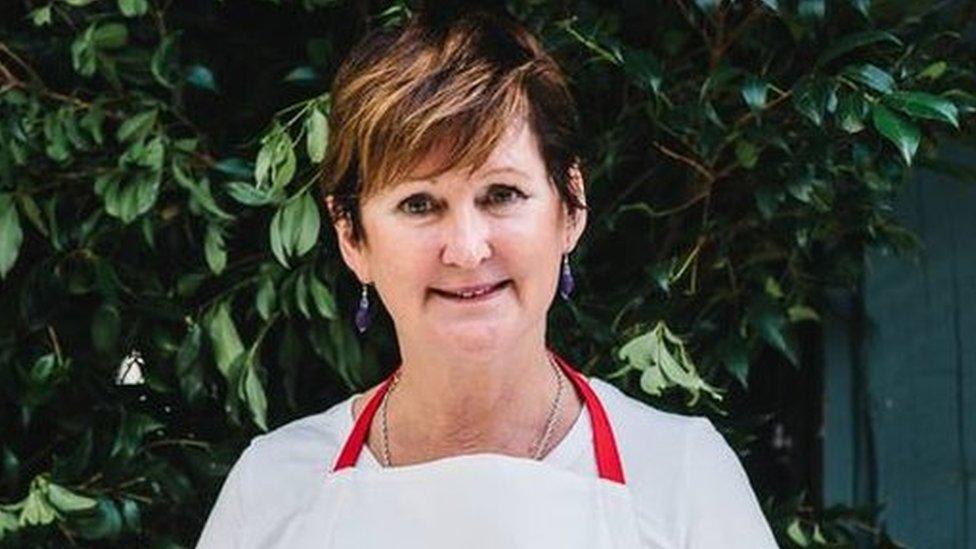Foraging is the new black in Australian cuisine
- Published

The Australian diet has an international slant but includes few native foods
When Jude Mayall first launched her Australian native food business, Outback Chef, "no one wanted to know" about the complex, strong flavours of indigenous Australian herbs and plants.
"Many Australians don't have any associations with bush food at all, have never tried it [and] feel it belongs around a campfire," explains Ms Mayall, deputy chair of the sector's top body, the Australian Native Food Industry Limited (ANFIL).
Early white settlers considered native cuisine a "poor man's food", she adds, and thought it had "no nutritional value whatsoever".
The stigma stuck. Gimmicky "Bush Tucker" restaurants, which sprang up in the 1980s serving often tasteless cuisine and sporting gaudy interiors, only served to reinforce popular opinion.
Today, that is changing as uncultivated, sustainable, and foraged food becomes fashionable.
In cities across the world chefs are just as likely to serve wild handpicked mushrooms as farmed potatoes, and Australia is following suit.

Renowned chef Rene Redzepi (right) has shone a spotlight on foraging
Acclaimed Danish chef Rene Redzepi, who has done so much to highlight the value of foraging and wild food with his award winning Copenhagen Noma restaurant, is relocating his entire restaurant staff to Sydney next year with a menu inspired by native flora and fauna along the shoreline.
Restaurants such as Attica in Melbourne, Billy Kwong and Quay in Sydney, and Bistro Dom in Adelaide, are incorporating native foods such as old man saltbush, warrigal greens and wattleseed into their menus.
Italian-born artist and forager, Diego Bonetto, who offers guided wild harvesting trips in Sydney, links the growing interest in eating foraged foods to "environmental guilt".
"We as a society are becoming - rightfully - concerned with the impact we are having on other species and resources," he says.
"Attention to provenance and seasonality is an answer to that, trying to reduce the environmental costs of a distribution chain that transport items back and forth all over the world."
Meanwhile, scientific research is starting to show the health benefits of indigenous foods that grow wild in native soil, free from fertilisers and genetic modification.
Many are rich in antioxidants, enzyme regulators and anti-inflammatories; others, such as the Kakadu plum, are being pegged as super-foods.

Native fruits, such as quandongs, are making it on to Australian menus
Foraging was not always the domain of chefs and tourist tours, however. Growing up in Scotland, Jock Zonfrillo remembers it was commonplace for ordinary families.
"It was pretty normal having that connection to the land," says the UK chef, who relocated to Australia in 2000, and has his own TV show, Nomad Chef.
"That all disappeared when food got fancy and everyone got obsessed with Michelin stars."
Used by indigenous Australians for tens of thousands of years, the recent rediscovery of bush foods is due to "new fads" in the industry, says Mr Zonfrillo.
At Adelaide restaurant Orana, (which means "welcome" in many Aboriginal languages), Mr Zonfrillo uses no less than 68 wild and foraged ingredients in his tasting menu.
He hired a forager in Byron Bay, Peter Hardwick, and trained his chefs to search for ingredients more local to the restaurant in the Adelaide Hills or along the South Australian coast.
Crucially, Mr Zonfrillo, spends time with rural Aboriginal communities in the bush to learn about their cuisine.

Saltbush was once thought of as only good for feeding stock during times of drought
He is now in the process of setting up the Orana Foundation, which will categorise local native ingredients and protect and preserve Aboriginal food knowledge by connecting with Indigenous Australian elders.
"We would never ever go down that path without having authorisation [from Aboriginal people] to be on that land and secondly to find out from an Aboriginal community what that use of an ingredient is, its nutrition, or how it's ingrained in their culture," he says.

Wattleseed has long been a culinary mainstay for Indigenous Australians
Foraging is not without issues, including the risk of depletion of native plants as it becomes more popular.
Mr Bonetto warns: "Never over harvest, leave no trace, be nice to soils and colonies."
Foragers also have to be careful not to pick from areas sprayed with herbicides or near industrial sites where they may have been contaminated by heavy metals.
In 2012, a chef and his kitchen hand in Canberra died after accidently picking and cooking death cap mushrooms on New Year's Eve.
"If you are unable to identify it, don't pick it - rule number one," insists Mr Zonfrillo, who has ingredients tested by scientists at local universities before adding them to the menu.

Australians need to think more broadly about "bush tucker", says Jude Mayall
Ms Mayall wants Australians to move away from hackneyed ideas of native cuisines and recognise it is easy to incorporate them into everyday life.
"I just think, quite simply, eat what the land provides and you couldn't get closer," she says.
"It's not hard to put some wattleseed into muffins, make a jam with Davidson Plums or use Tasmanian Mountain Pepper on our eggs and bacon. It really is that simple."
Clarissa Sebag-Montefiore is a Sydney-based arts writer.